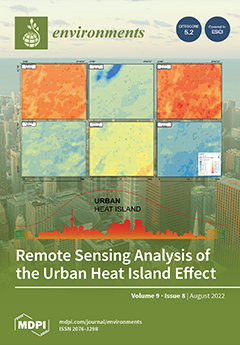This study aimed to evaluate soil physicochemical characteristics (pH, electrical conductivity, organic matter, total N, and extractable P and K), and potentially toxic elements (As, Cu, Pb, and Zn), in non-active mines located in the Portuguese sector of the Iberian Pyrite Belt (IPB).
[...] Read more.
This study aimed to evaluate soil physicochemical characteristics (pH, electrical conductivity, organic matter, total N, and extractable P and K), and potentially toxic elements (As, Cu, Pb, and Zn), in non-active mines located in the Portuguese sector of the Iberian Pyrite Belt (IPB). A total of 70 sampling sites were surveyed at Aljustrel and Lousal, in areas already rehabilitated, and at São Domingos, where rehabilitation was only beginning. The soils at São Domingos were very heterogeneous, with extreme values for some properties (e.g., minimum soil pH 2.0 and maximum As concentration, 4382.8 mg kg
−1 dry weight basis (DW)). Aljustrel was the site that presented soils with a higher total As, Cu, Pb, and Zn concentration (median values: 441.5, 545.9, 1396.8, and 316.5 mg kg
−1 DW, respectively), above the soil quality guidelines values proposed by the Portuguese Environmental Agency (18, 230, 120, and 340 mg kg
−1 DW, respectively). A principal component analysis identified the most relevant soil properties to explain the data variance, which were the soil pH and Pb total concentration, followed by Cu and Zn total concentrations, allowing a separation of Aljustrel from the other mines. Pearson correlation coefficients revealed very strong associations between Pb and As, markedly found at higher concentrations in São Domingos, whereas Aljustrel had an elevated concentration of As and Pb, but also of Cu and Zn. It is evident the risk that persists in the Aljustrel mine area, which was not alleviated by the “dig, dump, and cover” techniques that were implemented to rehabilitate the area.
Full article





